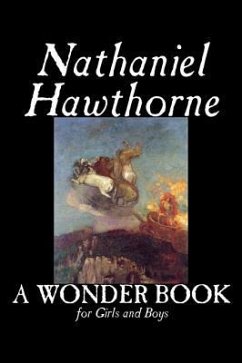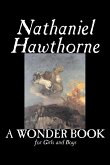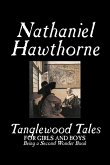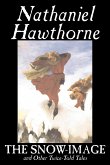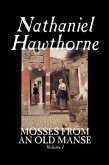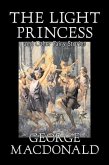"I mean to write the Story of Midas, with his Golden Touch, Pandora's Box, The Adventure of Hercules in quest of the Golden Apples, Bellerophon and the Chimfra, Baucis and Philemon, Perseus and Medusa; these, I think, will be enough to make up a volume. As a framework, I shall have a young college-student telling these stories to his cousins and brothers and sisters, during his vacations, sometimes in the woods and dells. Unless I greatly mistake, these old fictions will work up admirably for the purpose; and I shall aim at substituting a tone in some degree Gothic or romantic, or any such tone as may best please myself, instead of the classic coldness which is as repellant as the touch of marble. . . ." -- Nathaniel Hawthorne
The stories are all stories within a story, the frame story being that a Williams College student, Eustace Bright, is telling these tales to a group of children at Tanglewood, an area in Lenox, Massachusetts, where Hawthorne lived for a time.
The stories are all stories within a story, the frame story being that a Williams College student, Eustace Bright, is telling these tales to a group of children at Tanglewood, an area in Lenox, Massachusetts, where Hawthorne lived for a time.

